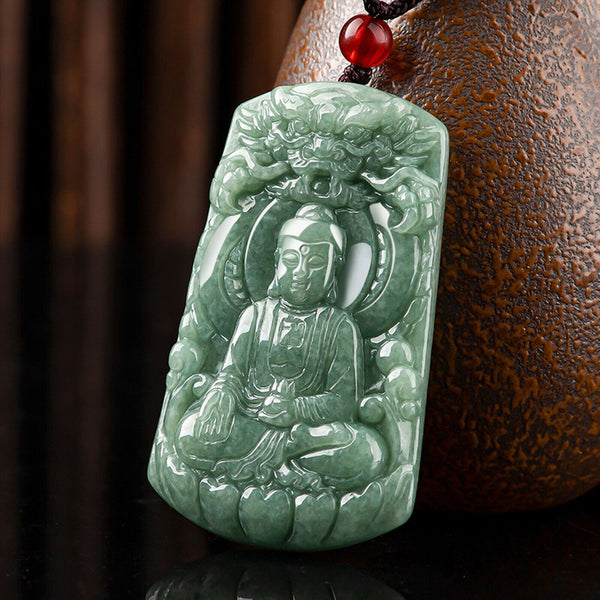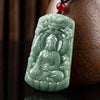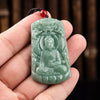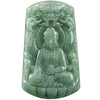See more: pendants & lockets
Natural Grade A Jade Jadeite Dragon Buddha Square Pendant #37-1226
$ 218.00
- Natural Grade A Jade Jadeite Dragon Buddha Pendant #37-1226
- Dragons, often called "Nāgas," are important in Buddhism because they are symbols of Great Wisdom and Protective Abilities. Dragons in Buddhism, known as Nāgas, are revered as Protectors of the Dharma.
-
Dharma is a combination of Morality and Spiritual Discipline that guides one in living one's life. Dharma is a concept with multiple meanings within Hinduism, Jainism, Sikhism, and Buddhism. Dharma in Hinduism centers around Laws, Virtues, Duties, Rights, and the proper way of Living, or conducting one's Life
-
Nāgas are often associated with water and weather phenomena.
- Buddhism often incorporates Animal Symbols which play a crucial role, embodying Unique Virtues, such as Power and Wisdom, of each living being. These Symbols hold secret meanings associated with the specific characteristics of the Represented Animals, emphasizing the connection between Buddhism, Goodness, Humanistic Ideals, and Nature.
- Dragons, considered Metamorphoses (change or cause to change completely in form or nature), can transform in size from a silkworm to a giant filling the sky. Represented in either green or brown, the Green Dragon, linked to Buddhism, emerges during the Spring Equinox, symbolizing the Eastern Sunrise and the Growing Light of Spring.
- Conversely, the Brown Dragon descends into a deep basin during the Autumn Equinox, dwelling in the mud until Spring yet maintaining a connection with Practitioners, bringing Health and Wealth. Wisdom and Health are symbolized by Pearls or Jewels in the Dragon's Claws. The Dragon's control over the Weather is manifested by "Squeezing the Jewel to Produce Dew, Showers, or Rain".
- Interpretation & Symbolism Of Dragon
Dragons have various Symbolic Meanings in Buddhism. They are frequently portrayed standing watch over Temples or Holy Books as Guardians of the Buddhist Teachings. Their Capacity for Transformation—they may alternate between human and serpentine forms—symbolizes Enlightenment and Spiritual Development. - Dragons and Their Role in Buddhist Teachings
Dragons in Buddhist Texts
Dragons appear in several Buddhist Sutras and Writings. The Lotus Sutra portrays the potential for Universal Buddha-hood as represented by the Enlightenment of a Dragon's Daughter. - At the bottom of the Ocean lived the Dragon King Sāgara and his 8-year-old Daughter. One day, The Buddha's Disciple Manjushri went to the Dragon King's Palace to expound the Lotus Sutra. Upon hearing the Lotus Sutra of the Wonderful Law, the Dragon Girl quickly Attained Enlightenment.
Who is the Buddhist Deity of the Dragon?
Sāgara is listed among the Eight Great Dragon Kings and is one of Sixteen that are spared from the Assault of the Garudas. His frequent inclusion of Sāgara among the several groups of Protective Deities in Buddhism is a direct reference to the Nāgas and His role as one of their Primary Leaders. - Nāgas are described in the Vimalakirti Sutra as being in the assembly listening to the Buddha's Teachings, highlighting their Respect for the Dharma.
- Dragons are often associated with Key Figures in Buddhism. The most notable is The Nāga, who sheltered The Buddha during a storm as He meditated. This act is a powerful Symbol of Protection and Divine Support for the Buddha's Mission.
-
Approx. 52 x 31 x 6.5mm ; Weight : 22.5g
- Highly skilled Traditional Artisan hand carving from China.
- Jadeite is found in rocks that formed under higher pressure than Nephrite. Most known deposits of Jadeite occur along, or near faults in Serpentinites. Examples of this type of deposit are found in Guatemala, New Zealand, Canada, Taiwan, Guyana, Surinam, Southern Europe, Russia and China.







